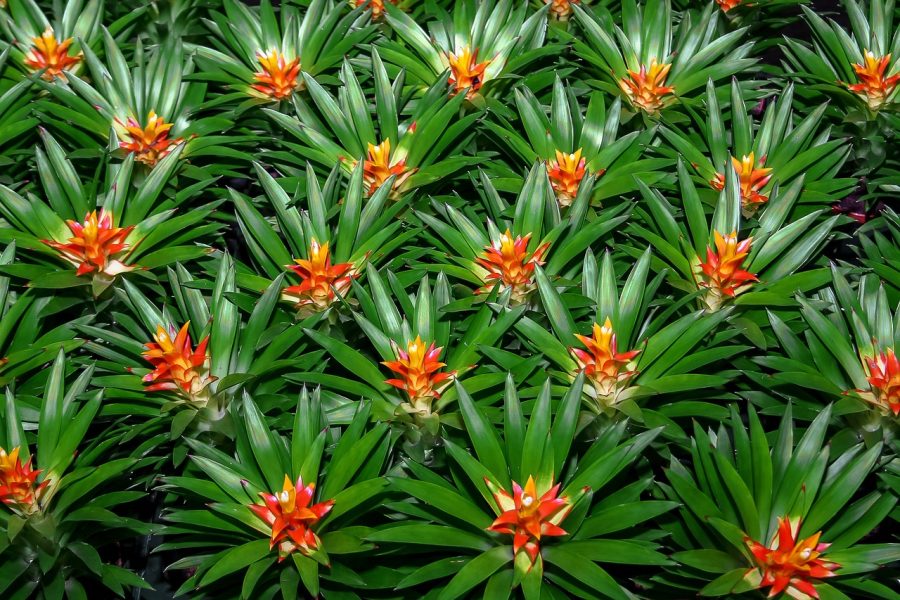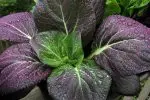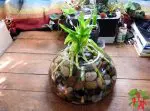This post contains affiliate links. If you buy something from one of our links we may earn a commission. Thanks

Discover the joy of bromeliad care indoors for beginners with our comprehensive guide. Uncover tips, tricks, and advice to help you grow vibrant, healthy plants!
To care for Bromeliads indoors, place them in bright, indirect light and keep the central cup filled with distilled water. Ensure good drainage and use a well-aerated potting mix. Water the soil sparingly, as Bromeliads prefer not to be waterlogged. Fertilize lightly every month during the growing season for optimal health.
Welcome, budding plant lovers! If you’re looking to brighten up your indoor space with some exotic flair, you’ve come to the right place.
Our guide to bromeliad care indoors for beginners will introduce you to the vibrant world of these stunning plants, equipping you with all the knowledge you need to nurture a thriving, colorful bromeliad collection.
So, roll up your sleeves and get ready to embark on an exciting journey filled with lush foliage, brilliant blooms, and the satisfaction of mastering bromeliad care!
Bromeliad Care Indoors For Beginners Introduction
Hey there, fellow plant enthusiasts! Are you ready to dive into the captivating world of bromeliads?
Our beginner’s guide to bromeliad care indoors is designed to help you discover these exotic beauties and unlock the secrets to their successful cultivation.
With our expert advice and easy-to-follow tips, you’ll soon be on your way to transforming your living space into a tropical paradise.
So, grab your gardening gloves, and let’s get started on this exciting adventure into the realm of bromeliads!
Get Your Guzmania Bromeliad On Amazon
Welcome to the World of Bromeliads
Exotic Appeal: Bromeliads boast a diverse range of colors, textures, and shapes, making them a stunning addition to any indoor space.
Unique Features: These tropical beauties have fascinating features, such as their central tank and unusual growth habits, which make them an intriguing choice for plant enthusiasts.
Why Bromeliads are Perfect Indoor Plants for Beginners
 Low-Maintenance: Bromeliads are generally easy to care for, making them ideal for beginners who want to start with a low-maintenance plant.
Low-Maintenance: Bromeliads are generally easy to care for, making them ideal for beginners who want to start with a low-maintenance plant.
Adaptable: These plants can adapt to a variety of indoor environments, tolerating a range of light and humidity levels.
Long-Lasting Blooms: Bromeliads produce long-lasting, vibrant blooms that can brighten up your space for months at a time.
Air-Purifying Qualities: Besides their aesthetic appeal, bromeliads are known to help purify the air, making them a healthy addition to your home.
Understanding Bromeliads
Get ready to dive deeper into the world of bromeliads, my fellow plant lovers!
In this chapter, we’ll explore the unique features and characteristics of these tropical beauties, helping you gain a better understanding of what makes them so special.
By familiarizing yourself with their diverse range of species and growth habits, you’ll be better equipped to provide the ideal care for your bromeliads, ensuring they thrive in your indoor space.
According to Wikipedia:The Bromeliaceae (the bromeliads) are a family of monocot flowering plants of about 80 genera and 3700 known species,native mainly to the tropical Americas, with several species found in the American subtropics and one in tropical west Africa,Pitcairnia feliciana.
So, let’s embark on this fascinating journey and unravel the secrets of these captivating plants!
Different Types of Bromeliads
Guzmania: Known for their vibrant, long-lasting flower bracts, Guzmanias are popular for their easy-care nature and striking appearance.
Neoregelia: With their colorful foliage and compact size, Neoregelias make a stunning addition to any indoor space.
Aechmea: Featuring dramatic, long-lasting blooms, Aechmeas are a favorite among bromeliad enthusiasts for their striking appearance and resilience.
Unique Features of Bromeliads
Central Tank: Many bromeliads have a central rosette, known as a tank, which stores water and nutrients, making them highly efficient in their resource use.
Epiphytic Growth: Some bromeliads are epiphytic, meaning they grow on other plants or structures without harming them, allowing for creative displays and vertical gardening.
The Importance of Proper Care for Indoor Bromeliads
• Ensuring Plant Health: Providing the right care for your bromeliads will help them flourish, maintain their vibrant colors, and produce stunning blooms.
• Preventing Pests and Diseases: Proper care will also help prevent common pests and diseases that can affect your indoor bromeliads, ensuring they stay healthy and beautiful.
• Boosting Longevity: When cared for correctly, bromeliads can have a long lifespan, allowing you to enjoy their captivating presence for years to come.
Choosing the Right Bromeliad for Your Space
Ready to pick the perfect bromeliad for your space?
Hold on tight, because we’re here to guide you through the process of selecting the ideal bromeliad to complement your indoor environment.
With so many captivating species to choose from, it’s essential to consider factors such as lighting, humidity, and personal preferences when making your decision.
In this section, we’ll share valuable tips and insights to help you find the bromeliad that’s just right for you.
So, let’s dive in and discover the perfect plant partner to brighten up your home!
Selecting a Bromeliad Species Based on Your Environment
• Light Requirements: Consider the natural lighting in your space and choose a bromeliad that will thrive in those conditions, whether it’s bright indirect light or low light.
• Humidity Levels: Some bromeliads prefer higher humidity, while others can tolerate lower levels. Select a species that matches the humidity in your home.
• Space Constraints: Keep the size of your indoor space in mind and opt for bromeliad species that will fit comfortably without outgrowing their surroundings.
Tips for Buying Healthy Bromeliad Plants
• Inspect the Leaves: Look for bromeliads with healthy, vibrant foliage free from yellowing, browning, or wilting, which could indicate poor care or illness.
• Check the Roots: Healthy bromeliad roots should be firm and white or light tan. Avoid plants with mushy or black roots, as this could signal root rot.
• Examine the Central Tank: Ensure the central tank is free from debris, mold, or pests, as these can negatively impact your bromeliad’s health and growth.
• Purchase from Reputable Sources: Buy your bromeliads from a trusted nursery or seller with a good reputation to ensure you start with a healthy plant.
Planting and Potting Bromeliads
Are you eager to settle your new bromeliad buddy into its forever home?
Let’s walk you through the ins and outs of planting and potting bromeliads to create a cozy environment for your plant to thrive.
In this section, we’ll cover essential aspects such as choosing the right pot, selecting the ideal potting mix, and ensuring proper drainage and airflow.
With our guidance, you’ll be well-equipped to give your bromeliad the best possible start in its new indoor abode.
So, let’s get those green thumbs ready and begin our planting journey!
How to Plant Bromeliads Indoors
Gentle Handling: When planting your bromeliad, handle it with care to avoid damaging its delicate roots and foliage.
Root Anchoring: Ensure the bromeliad’s roots are securely anchored in the potting mix without burying the base of the plant too deeply.
Selecting the Right Pot for Your Bromeliad
• Pot Size: Choose a pot that’s slightly larger than the bromeliad’s root ball to provide ample room for growth without causing waterlogging.
• Drainage Holes: Opt for a pot with drainage holes to prevent water from accumulating and causing root rot.
• Material Choices: Select a pot made from a breathable material, such as terracotta or unglazed ceramic, to help maintain proper airflow around the roots.
Best Potting Mix for Indoor Bromeliads
• Light and Airy: Bromeliads prefer a well-draining, airy potting mix that retains some moisture without becoming waterlogged.
• Common Ingredients: A suitable potting mix for bromeliads often includes ingredients such as coco coir, perlite, bark, or sphagnum moss to promote proper drainage and aeration.
• Pre-Made or DIY: You can either purchase a bromeliad-specific potting mix or create your own blend using the recommended ingredients mentioned above.
Lighting and Temperature Requirements
Light up your bromeliad’s life with the perfect lighting and temperature conditions!
In this section, we’ll delve into the essential aspects of creating an optimal environment for your indoor bromeliad to flourish.
From understanding their lighting preferences to maintaining the right temperature range, we’ll help you set the stage for your bromeliad’s long-lasting health and vibrancy.
So, let’s uncover the secrets to keeping your bromeliad happy and thriving in your cozy indoor space!
Ideal Light Conditions for Indoor Bromeliads
• Bright Indirect Light: Most bromeliads thrive in bright, indirect light, which helps promote healthy growth and vibrant colors.
• Avoid Direct Sunlight: Direct sunlight can scorch the leaves of some bromeliads, so it’s best to place them near a window with filtered light or in a room with ample natural light.
• Low-Light Bromeliads: For spaces with less natural light, opt for bromeliad varieties that can tolerate low light conditions, such as Guzmania, Vriesea, or Neoregelia.
Temperature Preferences and Tolerances
Ideal Range: Bromeliads generally prefer temperatures between 60-80°F (15-27°C) for optimal growth.
Avoid Extremes: Keep your bromeliad away from drafts, air vents, or direct heat sources to prevent temperature fluctuations that could harm the plant.
Nighttime Drop: Some bromeliads appreciate a slight drop in temperature at night, which can stimulate blooming and replicate their natural habitat.
Tips for Maintaining Proper Humidity
• Humidity Trays: Place a tray filled with pebbles and water under your bromeliad pot to create a humid microclimate around the plant.
• Mist Regularly: Lightly mist your bromeliad’s leaves with water to maintain humidity, especially during drier months or in air-conditioned spaces.
• Group Plants Together: Arranging multiple plants close together can help increase the humidity levels around your bromeliad, benefiting all your indoor green friends.
Watering and Fertilizing Your Bromeliad
Finding the perfect balance of watering and fertilizing is crucial for keeping your bromeliad happy and healthy.
In this section, we’ll share some practical tips and insights to help you care for your bromeliad like a pro!
We’ll explore the unique watering needs of these exotic plants and discuss the importance of proper fertilization to support their growth and longevity.
So, grab your watering can and favorite plant food, and let’s dive into the world of bromeliad care and nurturing!
How to Water Indoor Bromeliads
• Watering Frequency: Bromeliads typically require watering once a week, but always check the potting mix’s moisture level before watering to prevent overwatering.
• Watering Method: Water your bromeliad by pouring water directly into the central tank or cup, as well as around the potting mix, to ensure that the roots receive adequate moisture.
• Avoid Soggy Soil: Ensure the potting mix remains slightly moist but not waterlogged, as consistently wet soil can lead to root rot.
Tips for Maintaining Central Tanks
• Regular Water Changes: Replace the water in the central tank every few weeks to prevent stagnation and bacterial growth.
• Avoid Debris: Keep the central tank free of debris, such as fallen leaves, to ensure proper water flow and prevent decay.
• Monitor Water Levels: Check the water level in the central tank regularly, as some bromeliads prefer to have their tanks consistently filled, while others prefer a drier environment.
Fertilizer Recommendations for Bromeliads
• Fertilizer Type: Use a balanced, water-soluble fertilizer designed for bromeliads or other epiphytic plants, with a ratio of 20-20-20 or similar.
• Dilution and Frequency: Dilute the fertilizer to one-quarter or one-half of the recommended strength and apply it every 4-6 weeks during the growing season.
• Application Method: Gently mist the diluted fertilizer solution onto the bromeliad’s leaves and central tank, being careful not to over-fertilize, as this can lead to leaf burn or damage.
Proper Bromeliad Maintenance and Care
Taking good care of your bromeliad is more than just providing the right light and water; it’s also about regular maintenance and attention to detail.
In this section, we’ll walk you through the essential steps to ensure your bromeliad continues to thrive and remain a beautiful addition to your indoor space.
From grooming and pruning to keeping an eye out for common issues, we’re here to support you in becoming a master of bromeliad care.
So, let’s get started on your journey to keeping your bromeliad looking its absolute best!
Pruning and Grooming Your Bromeliad
• Remove Dead Leaves: Regularly check your bromeliad for dead or yellowing leaves, and gently remove them with clean, sharp scissors to maintain the plant’s appearance and health.
• Trim Flower Stalks: After the bromeliad’s flower has faded, carefully cut the flower stalk at its base to encourage the plant to produce pups or new growth.
• Grooming: Keep the central tank and foliage free of dust and debris by gently wiping the leaves with a damp cloth, ensuring the plant can absorb light and breathe properly.
Identifying and Treating Common Pests and Diseases
• Watch for Pests: Be on the lookout for common pests that may affect bromeliads, such as mealybugs, scale, or spider mites. If you notice an infestation, treat it promptly with insecticidal soap or neem oil.
• Prevent Fungal and Bacterial Issues: Overwatering or excessive humidity can lead to fungal or bacterial infections. Keep the potting mix well-drained and maintain good airflow around your plant to prevent these issues.
• Monitor Plant Health: Regularly inspect your bromeliad for signs of stress or disease, such as discolored leaves or wilted growth, and address any issues promptly to keep your plant healthy and thriving.
Propagating Bromeliads Indoors
Bromeliad propagation is an exciting and rewarding aspect of indoor gardening that allows you to grow even more of these stunning plants.
In this section, we’ll guide you through the process of propagating bromeliads indoors, from identifying pups to nurturing them into full-grown plants.
Get ready to expand your bromeliad collection and share the beauty of these tropical wonders with your friends and family, as we delve into the fascinating world of bromeliad propagation!
Understanding the Lifecycle of Bromeliads
• Monocarpic Nature: Bromeliads are monocarpic plants, meaning they flower once and then die, but not before producing pups or offsets that continue the plant’s life cycle.
• Flowering Stage: Bromeliads typically bloom once they have reached maturity, which can take anywhere from a few months to several years, depending on the species.
• Producing Pups: After flowering, a bromeliad will produce pups that eventually grow into new plants, which can then be separated from the parent plant.
How to Propagate Bromeliads from Pups
• Identify Pups: Look for small offshoots growing around the base of your bromeliad, which are the pups or new plants.
• Wait for the Right Time: Allow the pups to grow until they are at least one-third the size of the parent plant before attempting to separate them.
• Separation Process: Carefully remove the parent plant from its pot and gently separate the pups from the parent, using a clean, sharp knife if necessary. Be sure to include some roots with each pup.
Tips for Successful Propagation
• Root Development: After separating the pups, allow them to dry for a day or two to encourage root growth before potting them up in a well-draining potting mix.
• Provide Optimal Conditions: Ensure the pups receive adequate light, warmth, and humidity, and water them sparingly until they are well-established.
• Be Patient: Bromeliad pups can take time to develop into mature plants, so be patient and provide consistent care as they grow into beautiful, thriving bromeliads.
Conclusion
Congratulations on your journey into the captivating world of bromeliad care indoors for beginners!
By now, you’ve gained valuable knowledge and insights to help you succeed in nurturing these tropical beauties.
With the right care, patience, and a touch of love, you’ll soon be enjoying the stunning colors and unique forms that make bromeliads such sought-after indoor plants.
So, don’t be afraid to dive in and get started – your vibrant bromeliad collection awaits!
Bromeliad Care FAQs
Bromeliads are tropical plants that are generally easy to care for and can bring a splash of exotic flair to your indoor living spaces.
While they might seem complex, their care requirements are quite straightforward.
Whether you’re a seasoned plant parent or a newbie, you’ll find that taking care of bromeliads indoors is not as daunting as it may initially appear.
Below are some frequently asked questions to guide you through the ins and outs of bromeliad care.
Q: How do you take care of a bromeliad plant indoors?
A: Place your bromeliad in bright, indirect light and keep the central cup filled with distilled water. Ensure the pot has good drainage and use a well-aerated potting mix. Water the soil sparingly and fertilize lightly every month during the growing season.
Q: How often do you water bromeliads?
A: Watering needs can vary depending on humidity and temperature, but generally, water the central cup once a week and the soil once every two to three weeks.
Q: Where should bromeliads be placed indoors?
A: Bromeliads prefer bright, indirect light. A spot near an east or west window is often ideal, but avoid direct sunlight as it can scorch the leaves.
Q: What do you do with a bromeliad flower after it dies?
A: Once the flower dies, you can cut it off at the base. The parent plant will eventually die, but not before producing “pups” or baby plants that you can separate and repot for a new generation of bromeliads.
Recap of Indoor Bromeliad Care Essentials
• Choosing the Right Bromeliad: Select a bromeliad species that suits your indoor environment and care preferences.
• Proper Planting and Potting: Use a well-draining potting mix and choose the right pot size and material for your bromeliad.
• Light and Temperature: Provide adequate light, maintain the right temperature range, and ensure proper humidity for optimal growth.
• Watering and Fertilizing: Water your bromeliad carefully and use a suitable fertilizer to support its growth.
• Maintenance and Care: Regularly groom your plant and keep an eye out for pests or diseases to ensure its health.
• Propagation: Understand the lifecycle of bromeliads and learn to propagate them from pups to expand your collection.
Encouragement for a Successful Bromeliad Care Journey
• Be Patient: Bromeliad care may seem daunting at first, but with time, patience, and consistent effort, you’ll become a confident bromeliad caretaker.
• Keep Learning: Continue to research and educate yourself about your specific bromeliad species, as each one may have slightly different care requirements.
• Connect with Others: Reach out to fellow bromeliad enthusiasts, join online forums or local clubs to share experiences, and learn from others who share your passion for these beautiful plants.
• Enjoy the Process: Embrace the challenges and rewards of bromeliad care, and appreciate the stunning foliage and blooms that come as a result of your hard work and dedication.
Additional Resources
As you embark on your bromeliad care journey, it’s essential to have a wealth of resources at your fingertips to help you along the way.
In this section, we’ll introduce you to some valuable additional resources that will deepen your understanding, inspire your creativity, and provide support for all your indoor bromeliad care needs.
From books and websites to clubs and societies, there’s a treasure trove of information waiting to be explored, so let’s dive in and get growing!
Books and Websites for Further Learning
• Informative Books: Check out titles like “Bromeliads for Home and Garden” by Jack Kramer or “Bromeliad Lexicon” by Werner Rauh for comprehensive bromeliad knowledge.
• Online Resources: Websites such as the Bromeliad Society International (bsi.org) and the Florida Council of Bromeliad Societies (fcbs.org) offer extensive information on bromeliad care.
• Plant Blogs and YouTube Channels: Follow plant enthusiasts who share their bromeliad care experiences and tips through blogs, podcasts, or video channels for practical advice and inspiration.
Bromeliad Clubs and Societies for Connecting with Fellow Enthusiasts
• Local Bromeliad Clubs: Search for clubs in your area dedicated to bromeliad care and cultivation, where you can attend meetings, workshops, and plant swaps.
• Online Bromeliad Communities: Join online forums or social media groups focused on bromeliads to exchange tips, share experiences, and connect with fellow enthusiasts from around the world.
Bromeliad Society International: Consider becoming a member of the Bromeliad Society International to access resources, attend conferences, and stay up-to-date on the latest bromeliad news and research.
BROMELIADS CARE (indoorvegetablegrower.com)
https://www.indoorvegetablegrower.com/how-to-care-for-bromeliads/






















